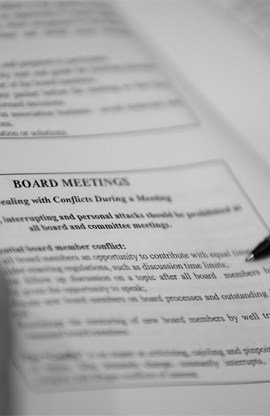First off, flag the account – “BANKRUPTCY FILE”!
If you have received notice of the bankruptcy this more than likely means that the association has been included in the debtor’s (owner or former owner) bankruptcy as a creditor.
The bankruptcy filing initiates an automatic stay in place, which means the association cannot proceed with collection against a debtor. It is really important that the association is aware of the automatic stay and abides by the law. The association could potentially face strict and costly penalties if the automatic stay is violated. Play it safe!
The two most common types of bankruptcies we see in our office are Chapter 7 and Chapter 13 bankruptcies.
Chapter 7 Bankruptcy
Most Chapter 7 bankruptcies are “no asset”. This means the debtor likely has no available assets. Unfortunately, it is unlikely for the association to get paid pre-petition (any amounts owed prior to the date the debtor/owner filed for bankruptcy) amounts owed in Chapter 7 bankruptcies. If the debtor owes delinquent assessments, the association should file a Notice of Appearance to assure that the association receives all notices from the Court regarding the bankruptcy. If the debtor receives a DISCHARGE of their Chapter 7 Bankruptcy, the debtor is no longer personally liable to the association for any pre-petition amounts owed to the association. However, if the debtor is still an owner within the association, the association is still a secured creditor of the debtor; therefore, the association still has a valid lien against the debtor’s lot/unit (note: lien is only valid for 3 years from the date the debt became due and owing).
Chapter 13 Bankruptcy
This is typically called a “wage earners” bankruptcy due to the fact the debtor typically has an income when a Chapter 13 bankruptcy is filed. In fact, there’s actually a “means test” in which an owner must pass to qualify for a Chapter 13 filing. In a Chapter 13 bankruptcy, it is possible the association may get paid for the pre-petition amounts owed through the debtor’s Chapter 13 plan. If a debtor files Chapter 13, the association should file a Notice of Appearance and a Proof of Claim in the case. The Proof of Claim should include the pre-petition debt and attorney fees incurred and anticipated in the bankruptcy.
For more information on bankruptcies, check out our Cheat Sheet: Trustee Sales & Bankruptcy
Contact our firm if you’re a recipient of a bankruptcy notice and you need help interpreting it all… we know it can be complicated and we are here to help!
